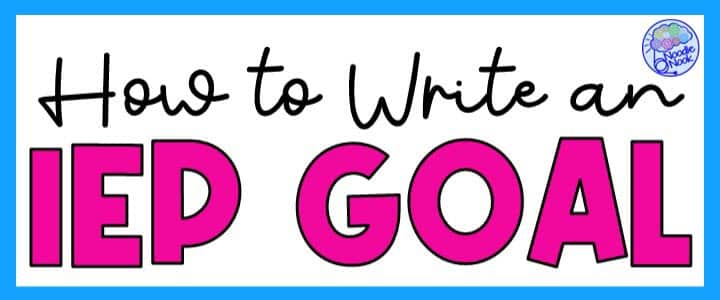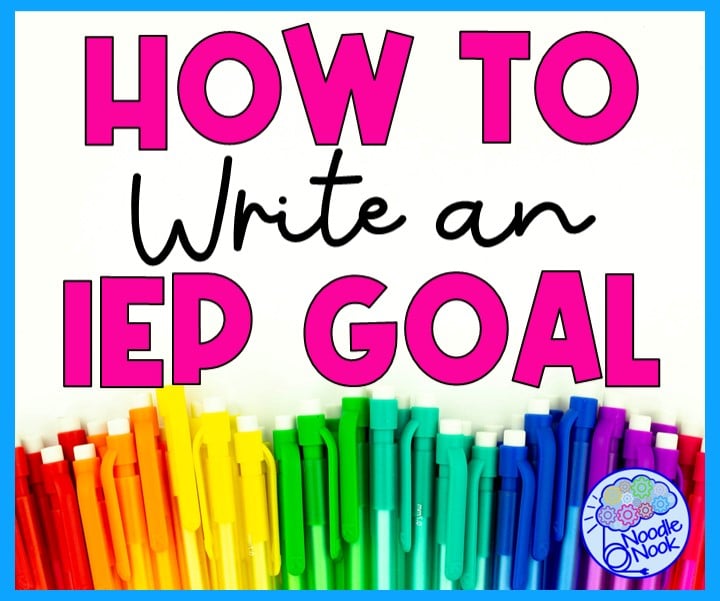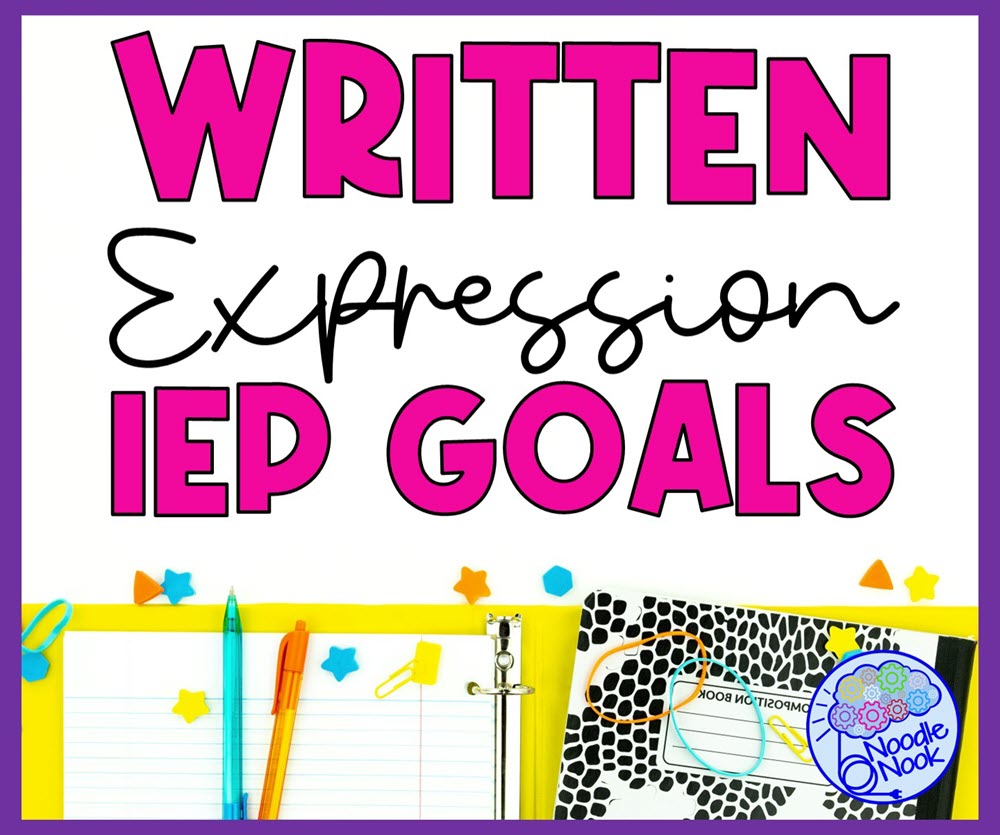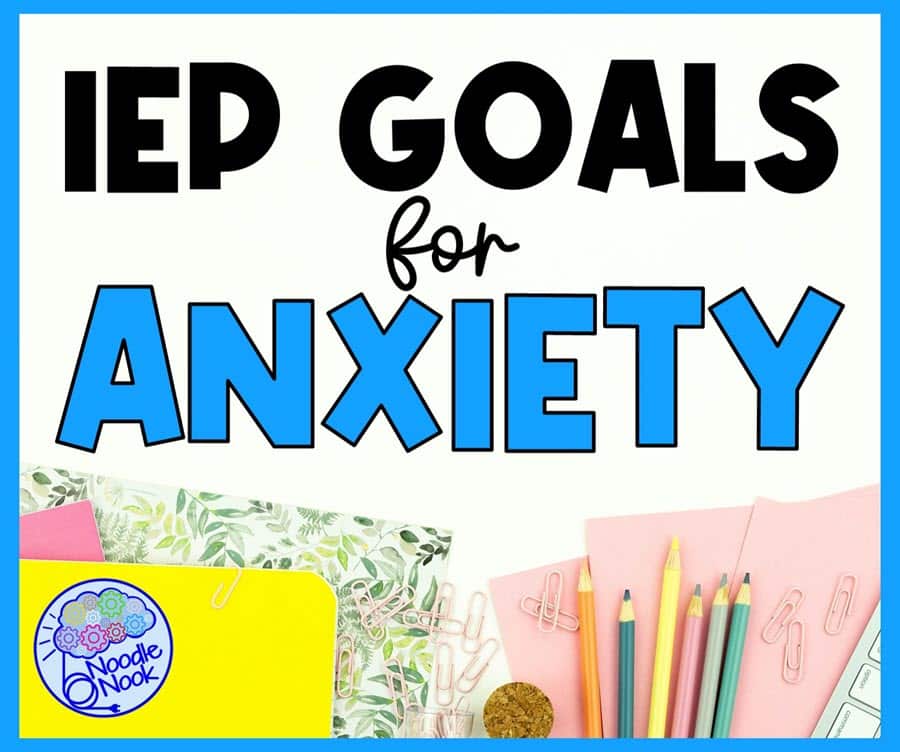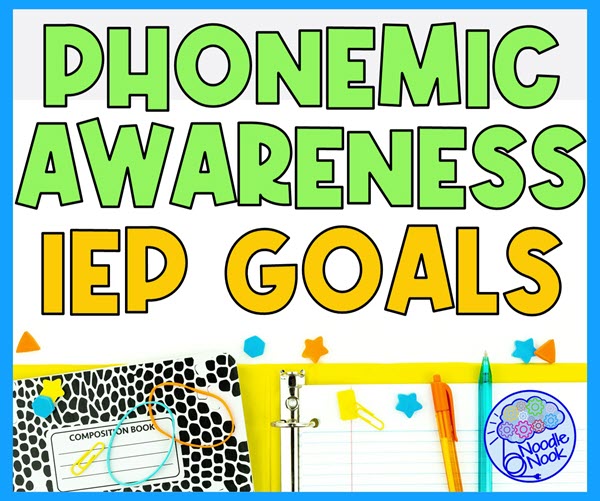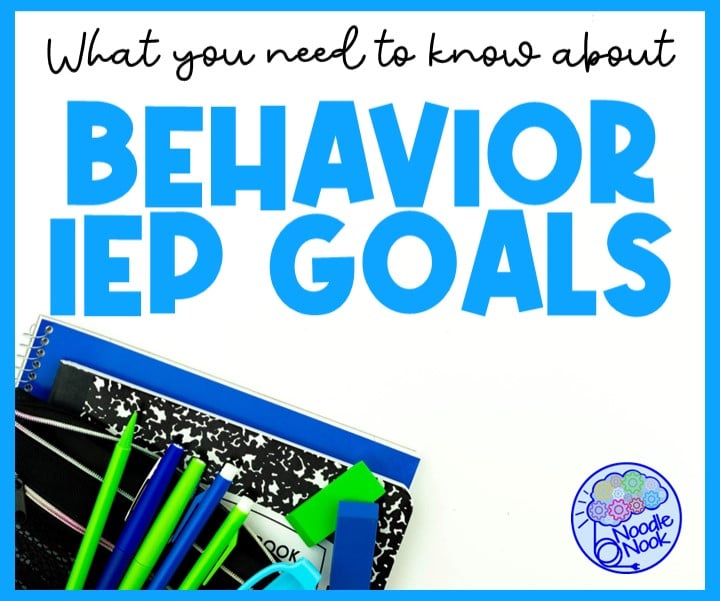When it comes to how to write an IEP goal for transition, there are several essential elements. Those include the timeframe, the condition, the behavior, and the criteria. If you have a goal with these elements that are SMART, then you will ensure your goals are on point. Let’s break down each element so you know exactly how to write an IEP goal that goes beyond good to great!
The Timeframe
To begin, start with the time-bound element. Depending on your district or state, you will likely put this element first by writing:
- By the next annual IEP…
- By the end of the 2024-2025 school year…
- By the spring semester of the 2023-2024 school year…
- By the student’s 18th birthday…
All of these set the timeframe and add that time-bound element to the goal. Even if this isn’t written first in your district or state, your goal should include some kind of timeframe.
The Condition
The condition of a goal outlines what needs to be in place for a student to complete the measured behavior.
Imagine, for example, that a student was supposed to practice applying for jobs. The condition may be that they need access to the internet and an information support document all about them. That may include their date of birth, their address, their phone number, or other personal information about them. Having the internet to access applications and their information support document are the items they need to be successful. So, we write that in the condition. That can be phrased like this:
- When given a (tool), the student will….
- When required to (requested task or behavior), the student will…
- When working (classroom setup, like independently, in small groups, in large groups, with peer partners). student will…
- When given a (specific task or activity) and a (tool, like an assistive tech tool or support), the student will…
In each of these situations, the student needs a specific thing in order to successfully demonstrate the behavior. Without that thing, they either cannot do the behavior at all or won’t be able to do it correctly. Moreover, without that thing, the data collected is skewed. Be sure your goal includes the condition if a student needs specific tools or supports to be successful.
The Behavior
The behavior is the most recognizable part of the goal. It’s the thing we want a student to do. It is the target skill or task we want our students to complete. This section is where we drill down to a specific behavior. Just remember, this has to be specific, attainable, and relevant. It should be specific to the student and their needs. It’s attainable for the student in the timeframe listed above. And finally, it’s relevant to the student. That usually means all your student don’t share the same goal since all their postsecondary outcomes will be different. Specificity to them requires individualization.
The last thing to consider here is that the goal should be observable. An observable goal means we can see a student do it. This helps us to evaluate it and track it. If a student has a goal to ‘refrain from’ a behavior or task, then we can’t observe it to tell if they are really doing it. Likewise, if the goal asks a student to ‘think about’ something, then it’s nearly impossible to observe.
Instead, require an observable task to accompany the ‘thinking’, like completing a think sheet, a rubric, or a recording task. This is something you CAN see, evaluate, and measure.
The Criteria
The criteria is how you’ll evaluate a student as they work towards a goal. This is the ruler to which they will be measured. As an example, if a student is working on an employability goal to build stamina, they may have a time-on-task goal. The criteria for that goal is to sustain work in an assigned workspace for 5 minutes. As we measure progress on that goal, we’ll measure the time on task. Mastery will come when the student is consistently working in the workspace for more than 5 minutes.
The most critical part of the criteria aspect of the goal is that the measurement tool makes sense for the target behavior. You would not measure time on task for a restrooming goal (unless time was the target skill). The better measurement may be the completion of steps or level of independence. Likewise, you wouldn’t measure an interview goal by accuracy since it’s subjective. Instead, you may measure performance against a rubric so that it’s more objective. Criteria for a goal can include:
- Accuracy refers to how often a student correctly performs a specific behavior or task.
- Frequency refers to how many times a student completes a specific behavior or task within a given timeframe, such as a day or week.
- Duration refers to the length of time a student can sustain a specific behavior or task, such as working independently for 20 minutes.
- Completion refers to a specific endpoint or outcome that a student must reach, such as finishing a task or assignment.
Why is Baseline Important for a Goal?
The numbers and measurement targets listed in your goals should not be arbitrary. They should be based on a student’s baseline performance. That baseline is determined by observing and measuring how they perform the target behavior right now before they are given more targeted interventions and instruction. In other words, it tells us where a student is starting from so we can better measure how much improvement they make. That means you don’t just guess at the criteria or always pick 80% (or directly copy the samples above). Individualize the criteria to be relevant for the student so that the measurable goals you write are meaningful.
RECAP: How to Write an IEP Goal
When writing an IEP goal for transition, there are four critical elements to consider. That includes the timeframe, condition, behavior, and criteria. Each element is essential to drafting a goal the right way. Be sure that it’s SMART. That means specific, attainable, relevant, and observable to track progress effectively. And don’t forget the baseline. Starting with a great baseline performance is a must. By including all of these elements, educators can write SMART goals that accurately measure a student’s progress toward their goals.
Goals on Your Mind? Check Out These Posts!
You may like these articles too: Transition Planning, IEP Goal Bank, and How to Include Families in the IEP Process, PLUS if you’re planning for transition, check out this visual tool!
Get More IEP Goal Ideas
If you need more IEP goal banks to reference as you work on your caseload, check out these other posts:
- How to Write an IEP Goal – 4 Essential Elements
- Special Education: IEP at a Glance Printable (Easy Prep)
- List of Student Strengths and Weaknesses for an IEP
- IEP Transition Goal Bank
- Reading Comprehension IEP Goals
- Written Expression IEP Goals: Writing Goals in Special Ed
- Phonemic Awareness IEP Goals
- IEP Goals for Anxiety (What, Why, and How To in Special Ed)
- IEP Goals and Objectives for ADHD Students (with Examples)
- Behavior IEP Goals

